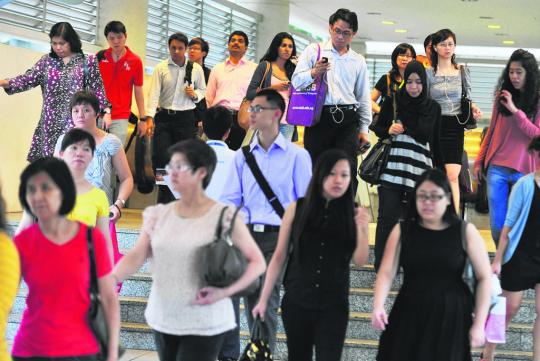Levelling up public transport service quality
Levelling up public transport service quality

 Why is it that reducing waiting and in-vehicle times does not seem to make public transport users happy?
Why is it that reducing waiting and in-vehicle times does not seem to make public transport users happy?
The debate on improving public transport service quality and affordability is unending. Suggestions have ranged from having more competition to ensuring efficiency to zero fares and even the nature of public transport itself. These discussions, however, skirt the central issue. A journey by public transport is actually a chain of trips.
A trip from an origin to a destination typically consists of walk time to the bus stop or MRT terminal, wait time, in-vehicle time and access time to the final destination. The time of each component will vary by mode, distance travelled, trip purpose (i.e. office commute, shopping, social) and by time of the day. When a transfer between modes is involved, this makes the total time travelling by public transport unattractive compared to travel by car.
In recent months, laudable efforts have been made to improve wait and in-vehicle times of bus and MRT rides by increasing the fleet of buses and reducing the time between train arrivals. In 2008, the Land Transport Master Plan (LTMP) stated: "Average public transport journey times will be reduced from 1.7 times of that by car today to 1.5 times by 2020 to make public transport more competitive relative to cars.
"Our end in mind is to have a public transport system that will be so attractive that users with choice, i.e. those who can have access to cars, will say that 'my other car is a bus or train'."
The 2013 LTMP focuses on addressing the four main components of the typical public transport journey - the first and last kilometre, wait time and in-vehicle time. This is being done through improvements such as seamless connectivity from home to terminal, more public transport infrastructure and investments in operating assets.
A 2001 study by Professor Mark Wardman at the University of Leeds' Institute for Transport Studies in the UK has shown that walking and waiting times are perceived as being between two and three times more annoying than in-vehicle time regardless of the level of traffic congestion. These assessments will vary across circumstances, such as a journey to work versus participation in leisure activities. It will also vary when compared with in-vehicle time by car, bus or the MRT.
The number of transfers, whether involving crossing a bridge or a long walk in-between, will also influence the way people perceive walk and wait times. So will the extent to which access involves pedestrian delays at junctions and crossings. In fact, the level of irritation caused by walk and wait times can be 1.5 to 8 times the perceived value of in-vehicle time.
The point, therefore, is to view accessibility and mobility as a total experience. Minimising in- vehicle and wait times is just one aspect of the experience. It involves making the trip a pleasant one from the time a person steps out of the home to the time he arrives at his final destination.
Making public transport the backbone of a city's mobility requires giving the public transport user priority. It entails minimising pedestrian delays and creating walkway connectivity within the city. But it will also mean making it more costly to drive into and park within the Central Business District. Electronic Road Pricing and limited parking facilities will lead to a more efficient allocation of scarce city space.
Prioritising public transport may mean the development of "closed urban areas" where buildings are interconnected by sheltered pedestrian walkways. Walking - and perhaps cycling - will be a safe, healthy, viable and a delightful experience. Within the closed urban area, cars will not get priority.
The "first and last kilometre" will then be an attractive link in the public transport trip. The 2013 Land Transport Master Plan and the just-released Fare Review Mechanism Committee Report are steps in the right direction if effectively implemented. Further, the Fare Review Mechanism Committee Report, in addressing the needs of the economically disadvantaged, enhances accessibility to jobs and centres of human capital development such as institutions of education.
This together with real-time public information about public transport schedules might just nudge car users at the margin to use public transport. It might also lead to the spreading of the peak period when commuters choose to travel at alternative times, ease human congestion at MRT stations and bus terminals, and make the journey by public transport a pleasant experience.
-- ST FILE PHOTO
by Anthony Chin
The writer is associate professor of transport economics, deputy director of the Singapore Centre for Applied and Policy Economics, and director of the Economics Executive Programme, NUS.

0 Comments
Recommended Comments
There are no comments to display.
Create an account or sign in to comment
You need to be a member in order to leave a comment
Create an account
Sign up for a new account in our community. It's easy!
Register a new accountSign in
Already have an account? Sign in here.
Sign In Now